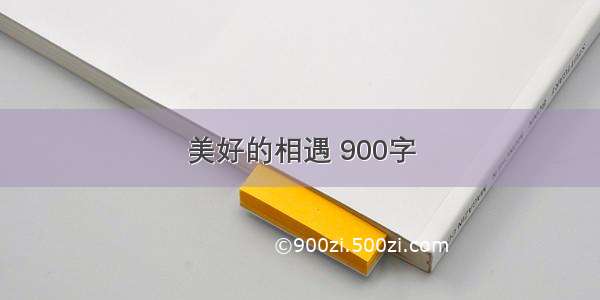
非惯性系中观察惯性运动
令 O\mathbf{O}O 为惯性系, O′\mathbf{O}^\primeO′ 为非惯性系, r\mathbf{r}r 和 r′\mathbf{r}^\primer′ 分别为物体在两个坐标系中的坐标:
r=(xyz),r′=(x′y′z′)\mathbf{r}=\left(\begin{array}{l} x \\ y \\ z \end{array}\right), \mathbf{r}^{\prime}=\left(\begin{array}{l} x^{\prime} \\ y^{\prime} \\ z^{\prime} \end{array}\right)r=⎝⎛xyz⎠⎞,r′=⎝⎛x′y′z′⎠⎞
令A\mathbf{A}A表示旋转矩阵,b\mathbf{b}b 为平移矢量,两者均与时间 ttt 有关,物体在两个坐标系中的位置关系可表示为:
r=Ar′+b\mathbf{r} = \mathbf{A}\mathbf{r}^{\prime} + \mathbf{b}r=Ar′+b
力是一个矢量,只与方向有关
F=AF′\mathbf{F} = \mathbf{A}\mathbf{F}^{\prime}F=AF′
惯性系中物体的运动是满足牛顿定律
F=ma=mr¨\mathbf{F} = m\mathbf{a} = m\ddot{\mathbf{r}}F=ma=mr¨
根据坐标变换关系则有:
AF′=mA¨r′+2mA˙r˙′+mAr¨+mb¨\mathbf{A}\mathbf{F}^{\prime} = m \ddot{\mathbf{A}}\mathbf{r}^{\prime} + 2m\dot{\mathbf{A}}\dot{\mathbf{r}}^{\prime}+m\mathbf{A}\ddot{\mathbf{r}} +m\ddot{\mathbf{b}}AF′=mA¨r′+2mA˙r˙′+mAr¨+mb¨
两边同时乘以A−1\mathbf{A}^{-1}A−1得到
F′−mA−1(A¨r′+b¨)⏟−2mA−1A˙r˙′⏟=mr¨′=ma′F1F2\begin{aligned} \mathbf{F}^{\prime} &\underbrace{ - m\mathbf{A}^{-1}(\ddot{\mathbf{A}}\mathbf{r}^{\prime}+\ddot{\mathbf{b}}) } \underbrace{ - 2m\mathbf{A}^{-1} \dot{\mathbf{A}}\dot{\mathbf{r}}^{\prime} }=m\ddot{\mathbf{r}}^{\prime}=m\mathbf{a}^{\prime}\\ &\qquad\qquad\mathbf{F}_1 \qquad\qquad\qquad\mathbf{F}_2 \end{aligned}F′−mA−1(A¨r′+b¨)−2mA−1A˙r˙′=mr¨′=ma′F1F2
于是可得到:
F′+F1+F2=ma′\mathbf{F}^{\prime} + \mathbf{F}_1 + \mathbf{F}_2 =m\mathbf{a}^{\prime}F′+F1+F2=ma′
非惯性系中物体所受到的有效力是由合外力加上 F1\mathbf{F}_1F1 和 F2\mathbf{F}_2F2 ,前者只与物体的位置有关,而后者只与物体速度有关
例子
例1:匀加速参考系在匀加速的情形下我们有A=I\mathbf{A}=\mathbf{I}A=I,b¨=a\ddot{\mathbf{b}}=\mathbf{a}b¨=a以及其中加速度a\mathbf{a}a为常量.
F1=−ma,F2=0\mathbf{F} _1 =−m\mathbf{a},\mathbf{F} _2 =0F1=−ma,F2=0
例2:匀速转动参考系,设角速度ωωω的方向是沿zzz轴正方向,即ω⃗=(0,0,ω)\vec{ω}=(0,0,ω)ω=(0,0,ω)
A=(cosωtsinωt0−sinωtcosωt0001),b=0A−1=(cosωt−sinωt0sinωtcosωt0001)A˙=ω(−sinωtcosωt0−cosωt−sinωt0000)A¨=ω2(−cosωt−sinωt0sinωt−cosωt0000)\begin{array}{l} \mathbf{A}=\left(\begin{array}{ccc} \cos \omega t & \sin \omega t & 0 \\ -\sin \omega t & \cos \omega t & 0 \\ 0 & 0 & 1 \end{array}\right), \mathbf{b}=\mathbf{0} \\ \mathbf{A}^{-1}=\left(\begin{array}{ccc} \cos \omega t & -\sin \omega t & 0 \\ \sin \omega t & \cos \omega t & 0 \\ 0 & 0 & 1 \end{array}\right) \\ \dot{\mathbf{A}}=\omega\left(\begin{array}{ccc} -\sin \omega t & \cos \omega t & 0 \\ -\cos \omega t & -\sin \omega t & 0 \\ 0 & 0 & 0 \end{array}\right) \\ \ddot{\mathbf{A}}=\omega^2\left(\begin{array}{ccc} -\cos \omega t & -\sin \omega t & 0 \\ \sin \omega t & -\cos \omega t & 0 \\ 0 & 0 & 0 \end{array}\right) \end{array}A=⎝⎛cosωt−sinωt0sinωtcosωt0001⎠⎞,b=0A−1=⎝⎛cosωtsinωt0−sinωtcosωt0001⎠⎞A˙=ω⎝⎛−sinωt−cosωt0cosωt−sinωt0000⎠⎞A¨=ω2⎝⎛−cosωtsinωt0−sinωt−cosωt0000⎠⎞
则可以导出:
F1=mω2r′离心力F2=2mω(y˙−x˙0)=2mv⃗×ω⃗科氏力\begin{aligned} &\mathbf{F} _1 = m\omega^2 \mathbf{r}^\prime \qquad\qquad\qquad\qquad\qquad\color{blue}\text{离心力}\\ &\mathbf{F} _2 =2m\omega\left(\begin{array}{l} \dot{y }\\ -\dot{x} \\ 0 \end{array}\right)=2m\vec v\times\vec \omega \quad\color{blue}\text{科氏力} \end{aligned}F1=mω2r′离心力F2=2mω⎝⎛y˙−x˙0⎠⎞=2mv×ω科氏力
参考文献
【1】科氏力
【2】科里奥利力
【3】辨析科里奥利力
【4】惯性力与科里奥利力的导出
【5】用矢量方法推导科里奥利力的问题?
【6】转动参考系与极坐标系的联系/科里奥利力+力学运算技巧
【7】如何在直角坐标系中推导科里奥利力和惯性离心力的表达式?
















